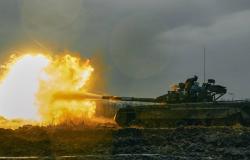While Israel continues to say it is ready for an offensive on Rafah And Hamas continues to agitate the blackmail of the hostages, with the US still preaching de-esclation and ask Netanyahu to open the crossings for aid to Gaza, the war in the Middle East reveals some details that are decidedly important to be left in the background.
One of these elements concerns the Israeli construction of a military border line between north and south Gazaagainst the backdrop of an imminent attack on the southern edge of the Strip, where they are amassed over a million displaced Palestinians fleeing the war and where, according to the Jewish state, the last pockets of Hamas resistance are hiding, including the elusive military leader Yahya Sinwar. The second element concerns some “incentives” that the US would have offered to the Houthis to put an end to the attacks in the Red Sea.
Israel ready for an offensive on Rafah?
The “widely rejected” plans for a massive invasion of the Palestinian city of Rafah, never abandoned by Israel, would according to Egypt be ineffective and would jeopardize the country’s relations with Israel. The head of the State Press Office said this Diaa Rashwan. By marching on Rafah, the Jewish state risks bigas it “would jeopardize more than four decades of peaceful Egyptian-Israeli relations,” Rashwan said, and the prime minister’s forces Benjamin Netanyahu they would return “empty-handed”. “If he enters Rafah, Netanyahu will not be able to offer the Israeli people anything that can bring comfort to the families of the hostages, nor will he return with the severed heads of the Hamas leaders, nor will he be able to stop the attack launched from Gaza.” Egypt he made it known that “he will never sever his relations with any country, unless its national security or the Palestinian cause are jeopardized.”
After months of announcements and delays, the Israeli army is therefore preparing to finish the job on two fronts: in the south, in the Strip now almost razed to the ground, and in the north, constantly targeted by rockets Hezbollah from southern Lebanon. The Minister of Defense, Yoav Gallant, announced the start of “an offensive action” on the border, with dozens of air raids and artillery attacks that hit “40 targets”, and claimed responsibility for the killing of “half of the commanders” of the pro-Shiite militiamen Iranians in the area. Despite the everlasting warning from the United States and other Western allies not to attack Rafah without first evacuating the displaced people (operation which would require another 4-5 weeks, according to American sources), the troops are only waiting for the government’s green light. So much so that, press sources report, the director of the Shin Bet, Ronen Barand the Chief of Staff, Herzl Halevitraveled to Cairo to meet with the head of Egyptian intelligence and other military officials to discuss plans for the upcoming offensive.
Meanwhile, concern is growing over the accusations leveled against Israel the case of bodies buried in mass graves around the hospitals in Gaza. Tel Aviv continues to deny any responsibility, explaining that the army dug up previously buried corpses while “treating them with dignity” while searching for the bodies of killed hostages. The EU also supported “an independent investigation on all the suspicions and all the circumstances” relating to the mass graves, “because all this creates the impression that violations of international human rights may have been committed”.
Israel builds a barrier between north and south Gaza
The Israel’s grand final plan provides for total control over the strip of territory that goes from the Mediterranean to the Jordan Valley. To achieve this, Tel Aviv intends to implement a terrible program for Rafah: the massing of Palestinians in an even smaller plot of land in the west of the Strip, close to the sea. This is the area of Al Mawasi, defined as “the desert of the Strip” due to the total absence of infrastructure and housing conditions: no water, no electricity, no food. A hell within hell, in which 15 camps should be set up, each made up of 25 thousand tents and equipped with medical facilities paid for by the USA and Arab countries. An impressive 120 thousand people would be crammed into each camp.
Another part of the Israeli plan concerns the construction, already practically completed, of a border line between north and south Gaza. The Jewish army accomplished a barbed wire fence which goes from the eastern border to the sea, with two checkpoints: one along Salah Al-din roadwhich runs along the entire Strip from the north to Rafah, and the other on the Al Rashid coastal road. The checkpoint on the coastal road would allow Palestinian residents to go from north to south, while “many people were killed when they tried to return north.” According to local sources, the barrier it doesn’t look like it was built to be removed after the warbut rather appears destined to become permanent, effectively evoking the idea of Israeli intentions for the political future of the Strip.
The history of US “incentives” to the Houthis to block attacks
A team of mediators delivered US messages to Yemeni Houthi groupoffering “incentives” in exchange for the cessation of attacks in the Red Sea. As reported by Yemeni political sources to the Emirati newspaper The National“in response to the Shiite group’s attempts to target Western ships, the US not only resorted to military action, but they also tried to present proposals that would incentivize the militants to stop their raids.” These incentives have reached the rebels in San’a in recent weeks. They were the ones who conveyed them envoys and mediators, including Western officialsin a network of negotiations which also saw an important role played byOman, candidate as the future political headquarters of Hamas leaders in exile.
According to another Yemeni source, the incentives offered “consist of measures aimed at demonstrating Washington’s good intentions, such asacceleration of the peace process in Yementhe cessation of the conflict and the total lifting of the blockade” toSanaa airport et al Hodeidah port. “Logically these steps would require the US to reconsider its designation of the Houthis as a terrorist organization and recognize their authority in some areas of the Middle Eastern country.” The two sources did not want to specify what the Houthis’ response was. For their part, US officials offered no comment or denial.





